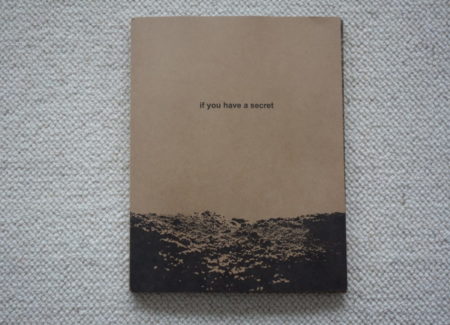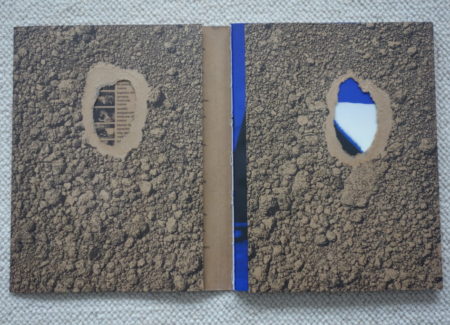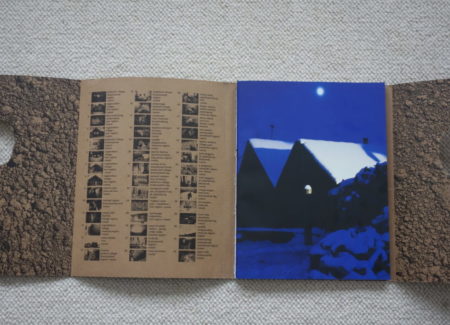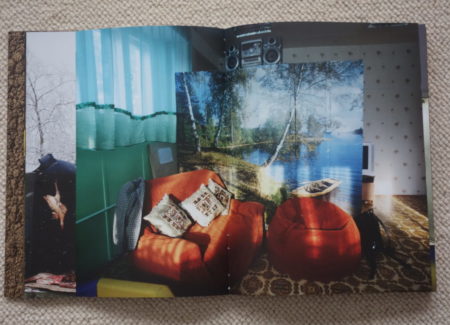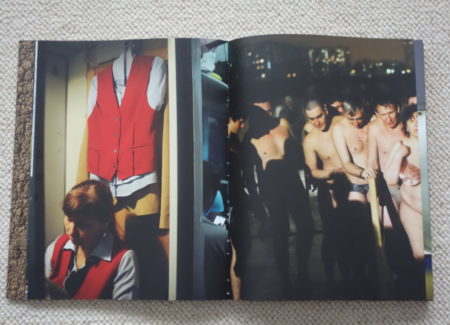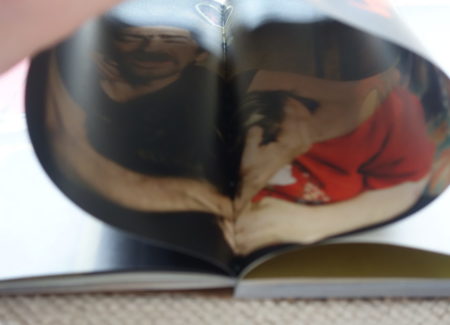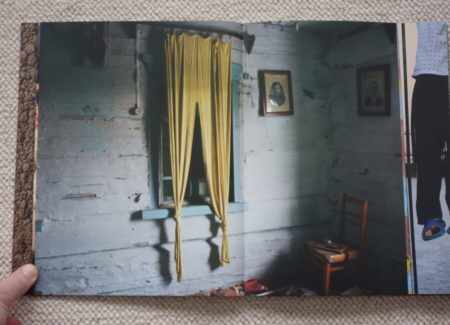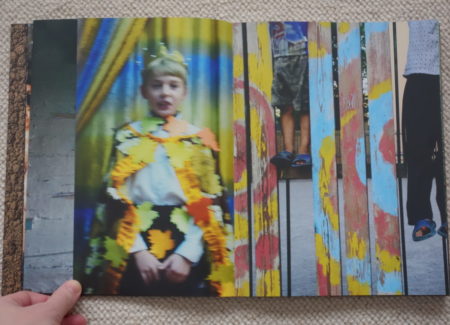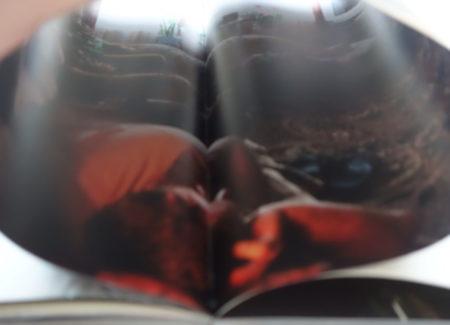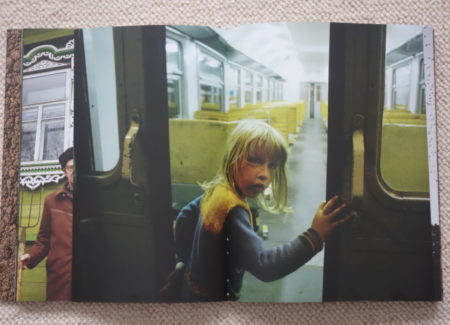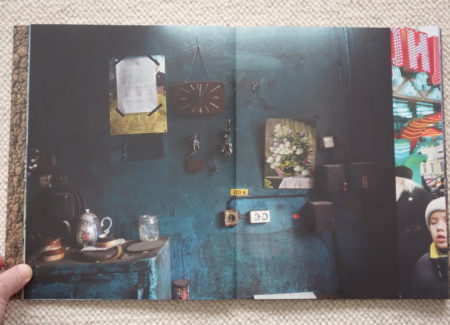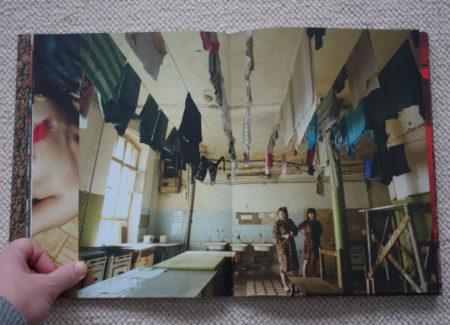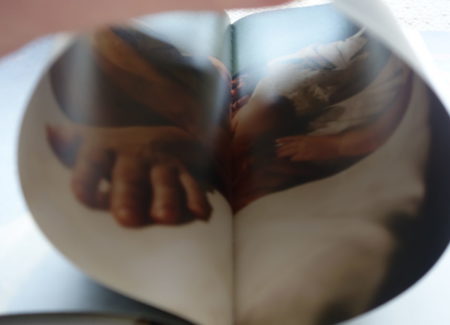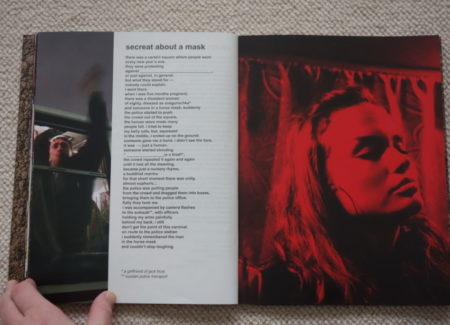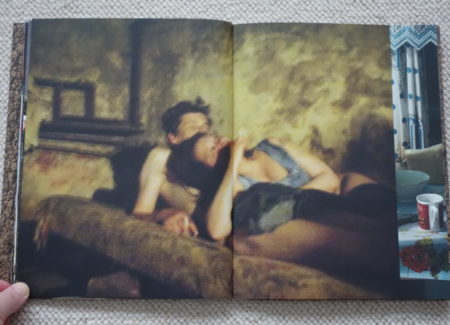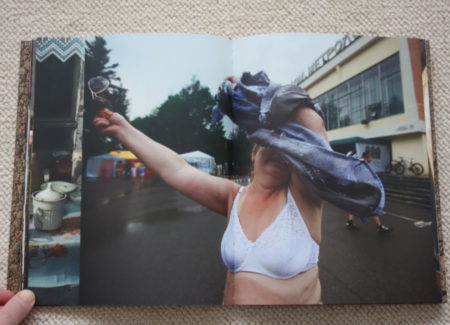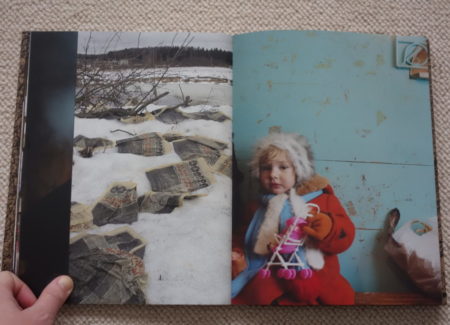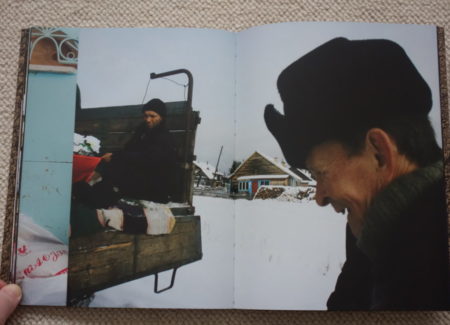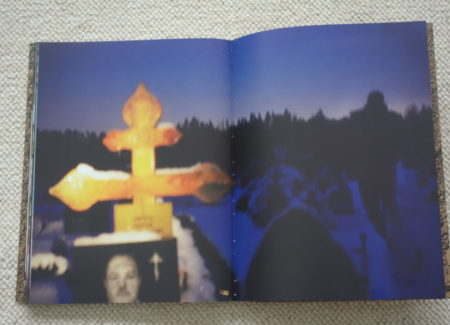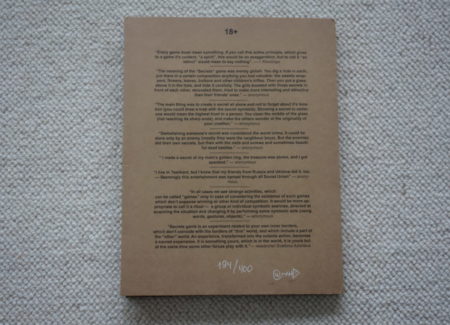JTF (just the facts): Published in 2017 by Dostoevsky Publishing (here). Softcover (multi-fold, with hand torn holes), with 64 text/poetry pages and 128 photo pages (full and half cut, 79 images). Includes a thumbnail index and 16 double-folded pages with images inside. In an edition of 400 English and 100 Russian copies. This is a second, fully redesigned edition of the book; the first edition was published in 2014. (Cover and spread shots below.)
Comments/Context: It is often true that we can only truly understand certain portions of our lives when time and distance give us the chance to gain some much needed perspective. A major fork in the Russian photographer Irina Popova’s life road came in 2009, when she left her home country and moved to the Netherlands. Her initial effort to make artistic sense of that dramatic personal change came in 2014, with the first edition of her photobook If You Have a Secret. But now just a few years later, the elemental pull of that former life hasn’t worn off, and she is still reconsidering and reprocessing the images she made in her former homeland, an effort that has led to a wholly redesigned and re-imagined version of her book. Such a reworking implies that the first version left her unsatisfied, with too many questions unanswered and feelings unspoken, so much so that she felt compelled to try again to communicate more clearly.
The artistic challenge that lies at the heart of If You Have a Secret is a tricky one – how to merge intensely personal and individual experiences with more broadly seen and universal truths, thereby bridging from the singular to something more collective, making isolated events or moments representative of a larger reality. Popova’s key insight is that on their own her pictures (especially without captions or explanatory texts), however compelling, can only tell us so much – it’s human nature that many of the rawest, most traumatizing things in our lives tend not to be photographed, at least directly. So she has introduced (and interleaved) her own poems, each one a small story, vignette, or reflection on crystallized moments from her past life. And it is these poems that give the photobook its depth and richness – they meet the pictures more than halfway, providing an engrossing (and often darkly grim) foundation of memory and introspection that encourages the photographs to expand and fill a larger space.
Secrets, both actual and metaphorical, are the central concept on which the whole project is built. At its root, the idea starts with a childhood trust game, where small items (a flower, a candy wrapper) were carefully hidden under the ground, their burial in the soil turning them into magical secrets with power and resonance far beyond their normal function. The photobook is cleverly designed to mimic this exact activity. The cover image is a black tumble of dirt printed on raw cardstock brown paper, introducing us to the place where secrets are lodged. Inside, up close images of rocky soil have been roughly torn, leaving two holes just big enough to insert a few fingers; underneath these physical openings lie Popova’s photographs and poems.
The “secret” motif doesn’t end there. The poems are printed on thin, halfcut sheets of white paper and bound in among the pictures. While many are straightforward lines and stanzas, a few are interrupted by missing words or even entire sets of lines, the omitted words printed on the reverse of the page. The paper is just thin and transparent enough to allow us to almost read these words, or we have to flip the page and puzzle them out backwards or use a mirror. The overall effect is that some of Popova’s secrets have been hidden even further, forcing us to work harder to uncover each and every one. She uses a similar approach with some of the included photographs, using double folded sheets with the images printed on the inside. If you are unwilling to cut the pages (as I was), these pictures are difficult to see fully (as a few of the above spread shots show), but that very frustration makes them that much more mysterious, as if there are some images in this very personal story that just weren’t meant to be shared or require extra effort and honest persistence to be unlocked.
Popova’s photographs mix the personal with the public, capturing intimate kisses, quiet meals, mournfully silent interiors, and meditative moments, and balancing them with shots at sidewalk flower stalls, on the train, at a backyard butcher, or in youthful nightclubs. In a restrictive society like contemporary Russia, everything feels quietly guarded, and each image, however open, hints at unspoken nuances and layers of meaning found beyond the surface. There is a simmering claustrophobia weighing down these pictures, where the moments of release, like the unexpected removal of a woman’s shirt in the street, feel surprisingly full of joy and freedom.
Stylistically, Popova’s images are reminiscent of those of Nan Goldin, particularly in their use of seething color. Many memorable images feel like found color studies – the deep blue of the sky on a moonlit night, the yellow seats of a train car, the red tint of a nighttime interior, the acidic green of a wooden house – the color feeling natural and discovered, if only by an accident of attention. Blur also plays an important role in the setting of the weary atmosphere, from the lounging embraces of young lovers and the sultry dance moves, to the glow of a golden cross and the movement of passing buses, falling snow, and blown cigarette smoke. And Popova’s eye for detail – the boombox atop the photographic mural, the silver cross necklace of the swimming boy, the icon paintings for sale in the neon-covered street, the nude posters at the dinner table, the meatballs in the iron skillet – gives many of her images their subtle cultural punch.
Popova’s incisive and sometimes searing poems start with seemingly ordinary memories, and often end up with deeply felt scars and traumas that she carries forward to today. There are stories of lovers and friends and parties, of the dark escapades of family members (including grandmothers and grandfathers), of dead dogs and severed toes, of bedroom hangings, of knitting needle abortions, and of too many forms of drunkenness and alcoholism to accurately count. Together they form a spectrum of suffering and resigned absurdity that fills in the gaps between the pictures, all of it seen with the youthful eyes of someone looking to find salvageable pieces of herself in the mute ruins.
What If You Have a Secret does very well is get beyond the surface cliches of the former Soviet Union, moving straight into more tense and vulnerable emotional territory. While on balance, there seems to be more feral gloom than uplifting triumph in Popova’s images and stories, her overall mood is not so one-sided that it becomes simply one-dimensional. Her photobook is overtly conflicted and uneasy, and that unresolved position of heightened awareness likely represents the complexity of her continuing relationship with her former home. This smartly constructed gathering of photographs and secrets isn’t ever allowed to achieve stability, and that’s what makes If You Have a Secret so durably and ambiguously intriguing.
Collector’s POV: Irina Popova does not appear to have gallery representation at this time. As such, interested collectors should likely follow up directly with the artist via her publishing website (linked in the sidebar).
